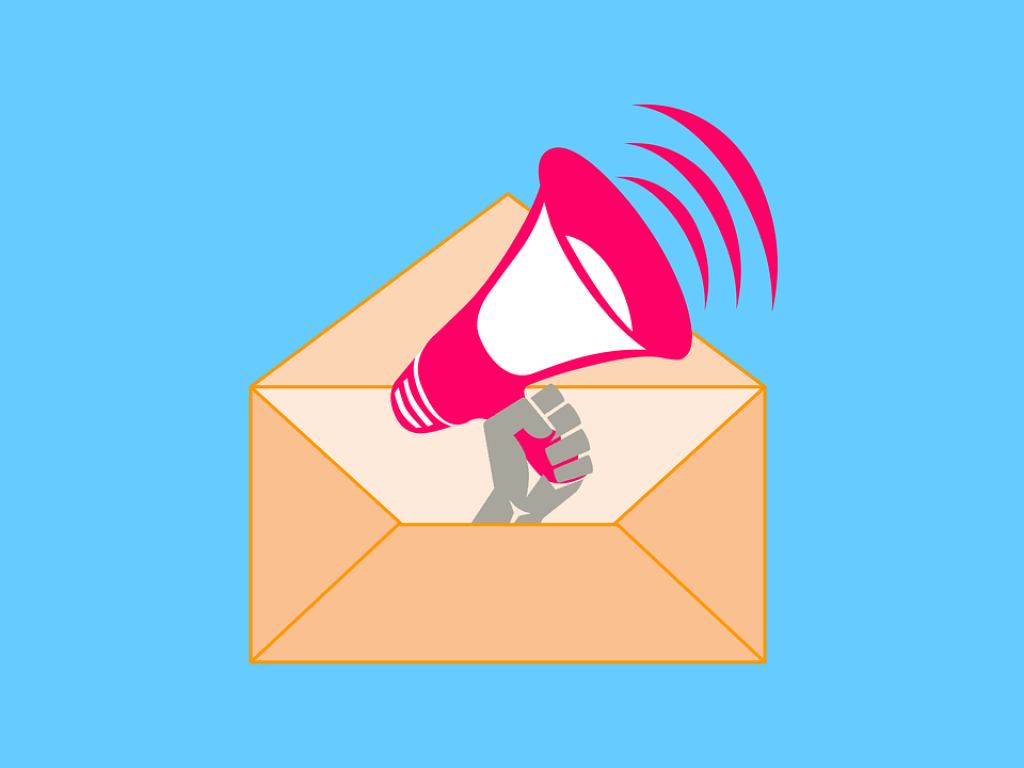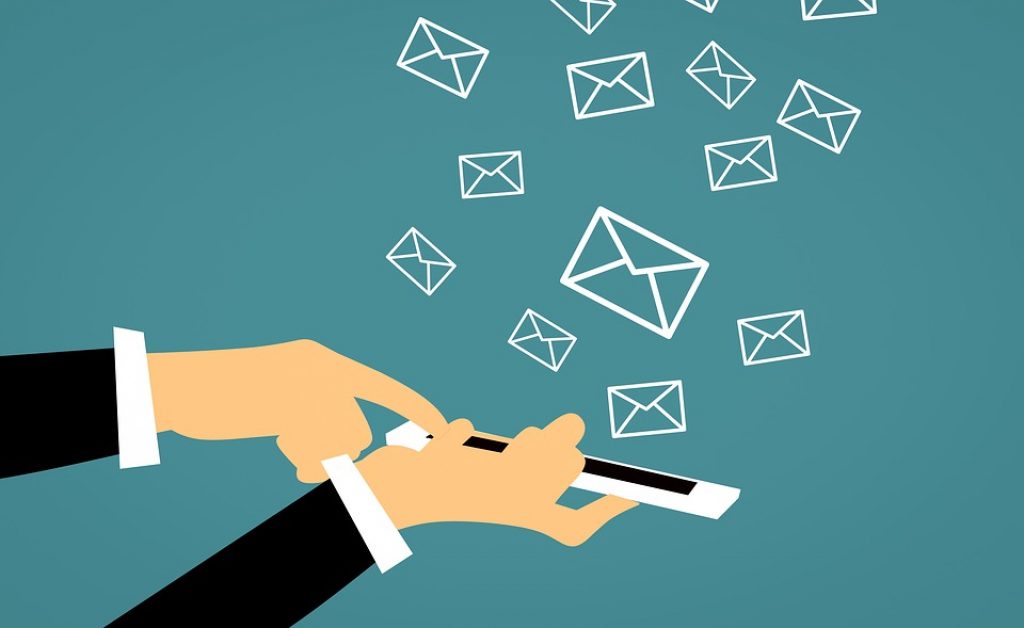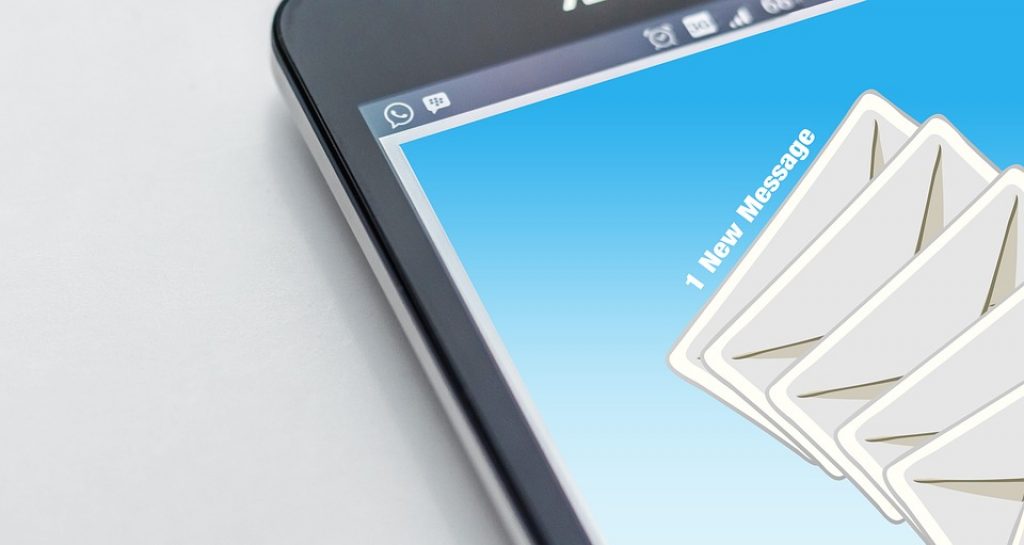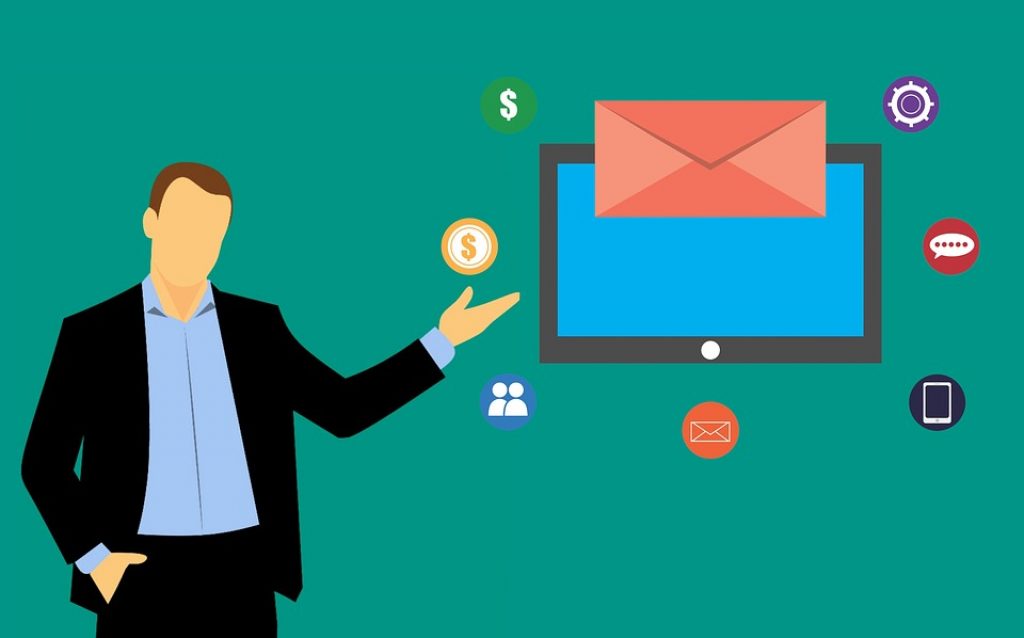65 Game-Changing Email Marketing Statistics
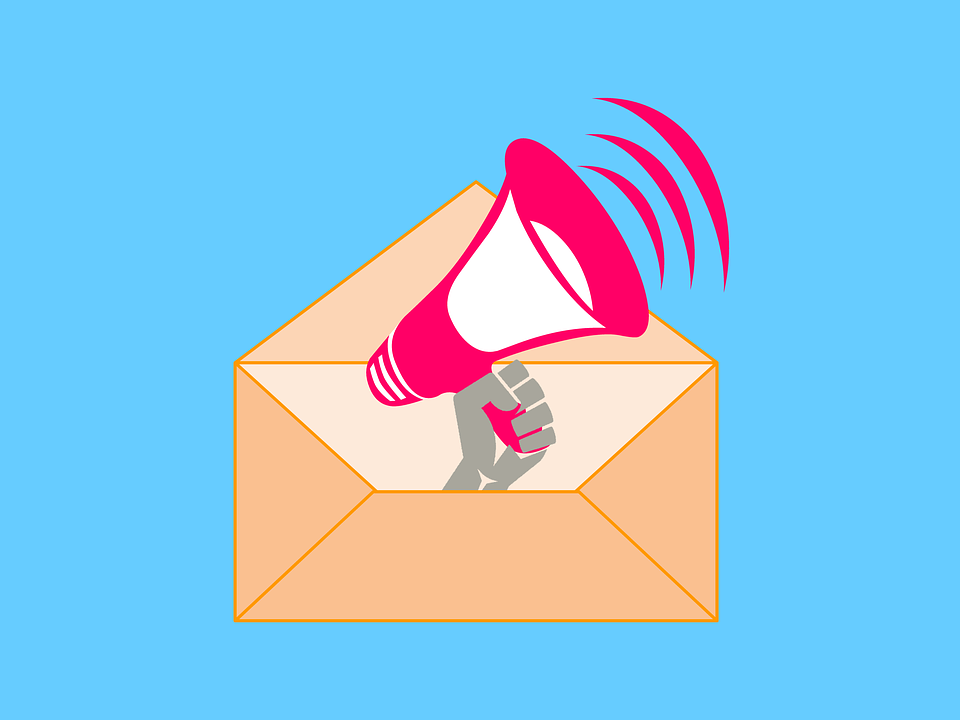
Let’s face it, when you mention email marketing to most people, their thoughts will immediately jump to one word, SPAM! But that’s only part of the story because email marketing is not dying: quite the contrary, it’s thriving.
So how can you master email marketing and make it an effective tool? What kinds of emails are successful, and what kinds almost constantly fail? Well, to get a better understanding of what’s going on, here is a list of 70 email marketing statistics.
Email Marketing Stats & Facts (Editors Choice)
- 89% of marketers have indicated that email was their best channel for lead generation.
- 73% of marketers say email is their number-one digital channel for a strong ROI.
- By the end of 2019, 246 billion emails will have been sent daily.
- Email reaches 79% of the people you send it to.
- There are around 150,000 emails sent every minute.
General Email Marketing Statistics
1. With email marketing, every dollar invested should receive an average of $38 in return.
(Leighton Interactive)
The email marketing ROI cannot be ignored. This average is substantially higher than other forms of online marketing.
2. 89% of marketers have indicated that email was their best channel for lead generation.
(Mailigen)
This is one of those email marketing stats that it’s important to keep in mind. Email forces you to think in advance about what you want to say to get your point across succinctly. You can use power terms in your email to really hit home the point you’re trying to make. However, you need to understand your clients or customers first to then be capable of putting out the correct message.
3. Per email, 320% more revenue is attributed to successful welcome emails than other promotional emails.
(WordStream)
If you’re worried about your email marketing effectiveness, these statistics prove that if someone signs up for your mailing list, you must send a welcome email and, if possible, a little reward to say thank you for taking this action. The increase in your revenue as a result of this will certainly make everything seem worth your while.
4. 53% of email marketing professionals have trouble with a low CTR.
(Super Office)
A low CTR is the bane of any marketing professional. However, with email marketing, a strategy change can be monitored in order to determine which approach works best in any particular situation. It’s more difficult to observe this with other marketing approaches, which is why email marketing can be so productive.
5. What is the average open rate for an email campaign? 21.80%.
(Mailchimp)
When only one out of every five marketing emails are opened, the message contained within it must be perfect. These email marketing facts show that you are dealing with just a small percentage of the total number of people who receive your emails. A poor message will result in a poor CTR, resulting in missed opportunities.
6. B2B email open rates are lower than the B2C open rates.
(Criteo)
B2C emails have a 19.7% open rate compared to 15.1% for B2B. However, B2B emails get better engagement, with a CTR of 3.2%. To compare it with, B2C emails have an average CTR of 2.1%.
7. 49% of businesses use some form of email automation.
(HubSpot)
As you can see from these email marketing trends, email automation saves time that can be better spent elsewhere, without it negatively impacting how a company does business. However, care has to be taken over what is included in the email automation to be certain that it’s putting across the right message at all times.
8. By including video in an email, you can improve open rates by 19% and increase CTR by up to 50%.
(Ignite Visibility)
It’s known that people absorb information more easily through video than just the written word. Mixing the two together explains this increase in the CTR.
9. Statistics on email marketing show that, when communicating on behalf of their business, 86% of professionals prefer using email.
(Strategiq)
This type of engagement is a two-way event, and it’s a fantastic way to open up new channels. The information presented can also be tailored to the individual, giving a unique perspective. Additionally, it’s proven that it’s more difficult for the written word to be misunderstood in certain areas of business, so there’s more faith in it as a form of communication.
10. 73% of marketers say email is their number-one digital channel for a strong ROI.
(Marketing Week)
With a superior email marketing return on investment and an ability to personalize messages for groups of individuals, email remains better than the other marketing options out there.
11. For a multichannel marketing strategy, 86% of marketers consider email “important” or “very important.”
(Pure360)
The email marketing effectiveness and ROI show that this is a channel that should definitely be part of your overall marketing strategy.
12. 59% of marketers confirm that they see the most ROI through email.
(My Emma)
This percentage is still regarded as low, which is why it’s so important to create the perfect email campaign to increase your desired level of engagement. Estimations show that the email marketing ROI in 2019 will go beyond these figures.
13. Email reaches 79% of the people you send it to.
(Return Path)
With email reaching such a high percentage of the people you are targeting, it means other formats can’t compete. Advertisements on Google or Facebook are often ignored and won’t resonate with your market. However, emailing statistics show that this format takes the message right to your audience.
14. When measuring how effective their marketing campaign is, 41% of marketers have indicated that the quality of the audience members they’ve added is the most important.
(OptinMonster)
When it comes to email marketing effectiveness, by focusing on the quality of the audience, and making sure that they are in line with what you’re promoting, your approach will be far more effective than it is right now. Concentrate on building your numbers with the right people, and you will undoubtedly benefit from it in the long-term.
15. 25% of marketers made plans to increase spending on email for 2018.
(My Emma)
The 25% increase pales into insignificance compared to the potential ROI that can be achieved via communicating with your desired market this way. If more marketers were aware of the potential benefits, then there is no doubt that this email marketing ROI figure for 2019 would be substantially higher than just 25%.
16. Almost 50% of marketers haven’t begun to use email automation.
(My Emma)
Failing to take advantage of this technology is professional suicide, especially with the constant daily increase in email usage. Email automation lets you to prepare emails that are sent to your list at a set time, allowing everyone to just sit back and relax.
17. A/B testing your subject line can increase open rates by 49%.
(LeadGenius)
The subject line is the hook by which you grab your audience’s attention. However, just blindly using any subject line without testing it means you may miss out on a significant number of potential clients or customers. By A/B testing, you can ascertain which version generates the greatest interest before using it for future marketing campaigns.
18. Surprisingly, 53% of marketers don’t A/B test their emails.
(My Emma)
Failing to test emails can leave marketers open to errors, which can negatively impact your campaign. Don’t allow yourself to fall into this particular trap yourself.
19. 58% of marketers say that a clear indicator of an email campaign’s success is increased sales or new leads.
(My Emma)
As these email marketing stats show, email marketing allows you to track the success of different messages via the increase in sales or leads. You must be prepared to track each email and investigate how it then relates to sales or leads numbers. It’s the surest way to identify your successful email marketing approaches.
20. How do you track email marketing? The top 3 KPIs measured by email marketers are CTRs (70%), conversion rates (60%), and open rates (56%).
(Email Monday)
All three play an important role in understanding email marketing’s success. This kind of email marketing CTR and conversion rate indicates that the message contained within the email is working and getting the desired response, while the open rates allow you to determine whether the subject heading works. Get all three KPSs correct, and your email marketing will become a powerful tool.
21. Emails that arrive on Tuesdays have the highest open rates.
(Customer.io)
By simply being aware of the most effective days and times to send emails, you can automate your system to make sure that you take advantage of these emailing statistics. With Tuesday being the day with the best rates, it makes marketing sense for one of your main messages to be sent then in order to increase your CTR.
22. 54% of email marketing influencers say their top goal is to improve their email marketing engagement rate.
(Ascend2)
Increase engagement rates to increase turnover. Being more specific in your email marketing will help to improve that.
23. 80% of professionals say that email marketing drives customer acquisition and retention.
(Emarketer)
Once again, these emailing statistics confirm the level of trust linked to emails and the written word. If the emails are somewhat personalized, then the figure could potentially be higher.
24. There are around 150,000 emails sent every minute.
(Inc.)
Email marketing statistics like these are only going to increase in 2019. However, with there being such a high volume, it means your email has to stand out from the crowd, which is why segmenting your lists and personalizing emails with attractive subject matter will be so important. Failure to do so will result in failure of being seen.
25. By the end of 2019, 246 billion emails will have been sent daily.
(Constant Contact)
This is one of the greatest email marketing facts for 2019 due to the fact that this number is more than 30% higher than anticipated. A resource that size cannot be ignored by any marketer.
Email Personalization and Segmentation
26. Segmented email campaigns have an open rate that is 14.32% higher and a CTR that is 100.95% higher than non-segmented campaigns.
(Mail Chimp)
Email segmentations statistics confirm that you can make them more personal and useful to the individual. Tailor your message to set groups and see the open rate and CTR soar.
27. 51% of marketers say segmenting email lists is one of their most effective personalization tactics.
(Ascend2)
The same email will not work for every individual on your list. By segmenting your audience, you can further personalize your emails to strike a chord with them. Believing that adding their name at the top works for everyone is crazy, so breaking it up into age, gender, location, personal preferences, or anything else will make a substantial difference and boost you email conversion rate.
28. When an email offers a discount, only 2% of the business’s customers will open it, but when it has a personalized subject line, 62% of customers open it.
(CR Creative)
Offering a personalized approach makes people feel as if you’re talking directly to them. The personal touch will go a long way towards converting a prospect into an actual lead.
29. The transaction rate of personalized emails can be 6x higher.
(Experian)
We can extrapolate from these email marketing stats indicate that potential customers prefer to feel as if you are talking straight to them and them alone. Personalized emails allow this to happen, leading to substantially higher transaction rates. Simply sending out a bulk, nondescript email makes people feel that a company just doesn’t care.
30. 50% of marketers claim that individualizing campaign messages is one of their most effective personalization tactics.
(Ascend2)
So how effective is personalized email marketing? We’ve seen over and over again that it’s the key to a successful email marketing campaign. By creating an individual message, it makes the individual feel as if they are unique and that a company cares about them, which has been shown to increase engagement levels.
31. Segmented, targeted emails generate 58% of all revenue.
(DMA)
This stat on email marketing effectiveness proves, once again, that segmentation and the accurate targeting of emails has a profound impact on engagement. The fact that it generates the majority of revenue shows that care has to be taken over the collection of email addresses.
32. When clothing retailer JustFab personalized their email marketing messaging, their revenue increased by 103%.
(VentureBeat)
There are numerous stats on companies that changed their email marketing messages and then saw not only an increase in revenue but also an increase in engagement and lead generation. Providing people with a personalized message gives them a sense of value and appreciation for your company and what you are trying to put across.
33. Personalized email messages improve the CTR of a call to action by an average of 14%, and they improve conversions by 10%.
(Campaign Monitor)
A personalized call to action speaks directly to the individual. As all of these email marketing stats have shown, the sense of being viewed as an important individual and potential customer will increase that individual’s desire to absorb the information contained within an email’s call to action. With that, it should be no surprise that the CTR increases by this kind of percentage.
34. 74% of marketers say that targeted personalization improves customer engagement.
(Econsultancy)
The email marketing success rates are closely related to personalization. Namely, the more personalized message you can get, the higher the rate of engagement. This comes from being able to gather together more information about the individuals on your lists to then tailor your segmented emails.
B2B Email Marketing Statistics
35. 30% of B2B marketers intend to raise their email marketing spend.
(My Emma)
We are set to witness an increase in the number of emails sent. On top of that, if we take into consideration the anticipated growth next year, then increasing your spending on email marketing makes perfect business sense.
36. Click through rates are 47% higher in B2B email campaigns than they are in B2C email campaigns.
(Emarketing Platform)
This impressive CTR shows that businesses are more used to email campaigns and will even be more receptive to them than the general public will.
37. For B2B audiences, email is the third most influential source of information.
(Ignite Visibility)
When it comes to B2B email marketing statistics, 2018 has provided a lot of them, but this one is especially important to consider. People believe in the content of emails, especially when they feel that it’s directed entirely at them. The personal touch makes a huge difference.
38. For 68% of B2B marketers, email has been found to be their most effective digital channel.
(My Emma)
As we can see in these B2B email marketing statistics, effectiveness is measured in accordance with sending out the best emails to the right audience. Correctly understanding what’s expected from the intended recipients will prove to be essential in increasing the effectiveness of this approach.
39. For B2B marketers, specifically, 82% said leads and sales are their most important measure of success.
(My Emma)
Tracking the success of emails in the B2B market allows marketers to identify which approaches result in the greatest increase in both leads and sales.
Email Marketing & Customers
40. 78% of consumers have unsubscribed from emails because a brand was sending too many emails.
(HubSpot)
One of the hardest things is determining the fine line between sending too few emails and sending too many. Instead, focus on the importance of the email subject, but don’t plague your list with a daily update unless that was requested when they subscribed. According to the email newsletter statistics, a weekly digest with random additional emails every now and then that are connected to something interesting to them should suffice.
41. By the end of 2018, mobile email users are expected to total over 2.2 billion worldwide.
(Radicati)
You can’t afford to ignore these mobile email marketing statistics. This number is set to increase even more in the years to come, thanks to the convenience mobile devices offer, so avoiding it is simply not an option for serious marketers.
42. Over 3.8 billion email users sent more than 281 billion emails total every day in 2018.
(Templafy)
This number of users is higher than those of the three main Social Media groups combined. If you don’t avoid those groups, why would you avoid email marketing?
43. 64% of recipients open an email based on who it’s from.
(Email Monks)
Getting people onto an email list or establishing your name, in general, will make a difference. People tend to trust more when they know who the sender is, which makes it more likely for them to take action.
44. 35% of email recipients open email based solely on the subject line.
(Convince & Convert)
Once again, we see the importance of the subject line in our email marketing statistics. If a third of your email’s recipients open it because of the subject line, you’ve effectively enticed them into finding out more. It will then be the job of the message itself to take things further.
45. 69% of email recipients will report an email as spam based on its subject line.
(Convince & Convert)
An incorrect or useless subject line increases an email’s chances of being viewed as spam. These stats on email marketing demonstrate that people make their decision before they even open the email, so testing and getting that subject line perfect is even more important than most marketers first imagined.
46. For checking email, 40% of consumers say they primarily use their mobile phone.
(Relevancy Group)
The number of people using their mobile phone in this way continues to grow. By the end of 2018, it’s anticipated that more than half of these consumers will be using it.
47. 30% of subscribers change email addresses every year.
(Convince & Convert)
With so many people changing their email addresses so often, email marketers and brands must provide value in their email campaigns to encourage individuals to re-subscribe with each new address. Assuming that people will continue to subscribe shows a lack of awareness and can lead to lackluster results.
48. In 2017, 29% of customers changed their personal email address or created a new one.
(Relevancy Group)
A growth in the number of people creating an email address purely for marketing purposes is largely behind this increase and these email usage statistics continue to grow throughout 2019.
49. 93% of US customers check their email at least once daily, and most access it multiple times a day.
(Relevancy Group)
If you’re emailing your potential leads or previous customers, there is a pretty good chance that your email will be viewed in less than 24 hours. This allows for more aggressive, specific marketing.
50. 66% of people who unsubscribe from email do so between 5 and 10 p.m.
(Pure360)
According to this email marketing research, being aware of this danger period will make it easier to prepare reasons and benefits for your customers to stick with you and send them out at the right time.
51. 61% of consumers say they enjoy receiving weekly promotional emails.
(Constant Contact)
These email marketing facts are a pleasant discovery. Including email as part of your marketing strategy will result in a turnover boost, especially if the promotional email is sent at the same time every week.
52. 38% of consumers would like their subscription emails to be sent even more frequently.
(Constant Contact)
Customers who have already chosen to subscribe to your list are open to receiving more email from you. So by making sure that your emails contain useful information, they will indeed be quite pleased to receive them more frequently.
53. 88% of smartphone users actively check their email on their phones.
(PewInternet)
The days of checking email when you got home from work are long over. Thanks to the increased use of smartphones, people can read or respond to marketing emails on the go.
54. Email usage statistics: 72% of customers prefer email as their source of business communication.
(Marketing Sherpa)
People still regard the written word as being the most honest form of communication, which is why it maintains this position as a preferred source for so many customers.
55. When it comes to receiving permission-based promotional messages, 77% of consumers prefer email over social media.
(OptinMonster)
People view personalized emails with more trust than something that has been blasted across social media, even when they’ve given permission to have it sent to them. There’s a general lack of trust in social media when it comes to promotional messages, which is why such a high percentage of people prefer email.
56. If they’re looking for a deal from a company they know, 44% of customers will check their email, whereas only 4% will check Facebook.
(OptinMonster)
Email marketing statistics like this are further proof that email is more trusted than social media when it comes to deals. A number of apps and websites, like Facebook, practically force you to receive deals and promotional messages if you want to gain access to anything. This will often leave a bad taste in the mouth of the individual, which is why email is still the preferred option.
57. 66% of customers say they’ve purchased something because of a marketing message they received by email.
(OptinMonster)
If two out of every three customers state that they’ve made a purchase after an email, then it goes a long way toward showing why email marketing is still such a success. Once again, this can be increased by personalizing the message and allowing people to opt into receiving messages connected to the things they’re genuinely interested in.
58. The number of active email accounts should hit 5.6 billion by 2019.
(HubSpot)
Understanding how many people use email and how many active email accounts are there is key when determining your strategy. Even reaching a tiny fraction of those accounts will result in a substantial increase in awareness of your brand and message.
59. When there is a reference to their birthday in the subject, 7% of consumers are likely to engage in marketing communications.
(Pure360)
This type of personalization will strike a chord with people due to it making them feel as if it is one of a kind rather than a bulk email sent to the masses.
60. 8% of consumers have indicated they’d engage with a retailer more if the company’s marketing materials addressed them by name.
(Pure360)
Emailing statistics like this show how the value of sending an email to someone by name—rather than a generalized “Dear Sir or Madam” approach—cannot be underestimated. Keep in mind that this kind of email is also less likely to be viewed as spam.
61. Almost 50% of consumers confirm they are likely to engage more with retailers that send offers which will be relevant and interesting to them.
(Pure360)
Understanding your market, and what they’re seeking, allows you to customize the offers in your marketing. Just firing out offers in the hope that they might apply to some of their recipients reflects poorly on your business.
Email Marketing & Millennials
62. 50% of millennials marked a brand’s email as spam when they couldn’t easily figure out how to unsubscribe from it.
(Litmus)
In order to be seen as trustworthy, how an individual can unsubscribe, at any time, must be made abundantly clear. This should be evident from the outset, and even just having that option can, at times, persuade a percentage of individuals to stick with a brand simply because they know they can leave it later on.
63. 58% of millennials prefer that a brand contact them through email.
(Wipster)
I bet this is one of the most surprising email marketing stats; it works against the idea that email marketing is dying and being overtaken by social media.
63. 66% of millennials unsubscribed from a brand’s promotional emails because there were either too many or they found the emails irrelevant.
(Litmus)
While these email marketing statistics show that people are open to their favorite brands sending them promotional emails, this is not something that should be done on a daily basis—or anywhere close to that frequency. Seeing emails from the same brand appear in an inbox too frequently is a source of irritation. Also, if those emails don’t convey a message that appeals to the recipient, then the chances of them unsubscribing will increase dramatically.
64. 18% of millennials claim they don’t ever check their spam folder.
(Litmus)
Email marketing statistics like this show a change in how people deal with their email inbox. In the past, people would very rarely check their spam because they automatically believed it was junk. Now, people are aware that the email messages they want to receive may land in their spam folder. They don’t want to miss out, so from a marketing perspective, you are more likely to still be seen.
65. Only 25% of millennials claim they won’t mark a brand’s emails as “not spam.”
(Litmus)
What these email statistics show is that you need to make your first email count in order to convince individuals to move any further correspondence from their spam folder to their inbox. This helps prevent your email marketing from being lost in the sea of spam emails that can flood over at any moment. Standing out from the crowd is vital.
Wrapping It Up
What these email marketing statistics show is that email marketing is alive and well. Not only that, it could easily be argued that it’s thriving to such an extent that it simply cannot be ignored. If you are serious about developing your brand online, then incorporating an email marketing campaign has to be at the forefront of what you do.
However, the need for personalization, email list segmentation, and an acute awareness of the subject matter and content mean that extensive thought must go into the development of the email itself. Failing to learn from these email marketing statistics will undoubtedly lead to you not achieving the success you may have perhaps expected.
Sources:
